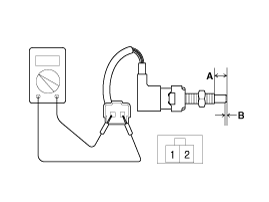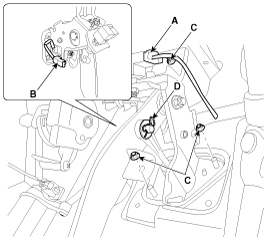Check for continuity between terminals. (refer to the table below)
If there is difference between what tested and the table above, replace the ignition lock switch with a new one.
Pedal position | Clutch switch | Ignition lock switch |
Released | Pressed (Continuity) | Released (Open) |
Fully pressed | Released (Open) | Pressed (Continuity) |
Standard value
Full stroke (A): 12.0 ± 0.3mm (0.4724 ± 0.0118 in.)
ON-OFF point (B): 2.0 ± 0.3mm (0.0787 ± 0.0118 in)



